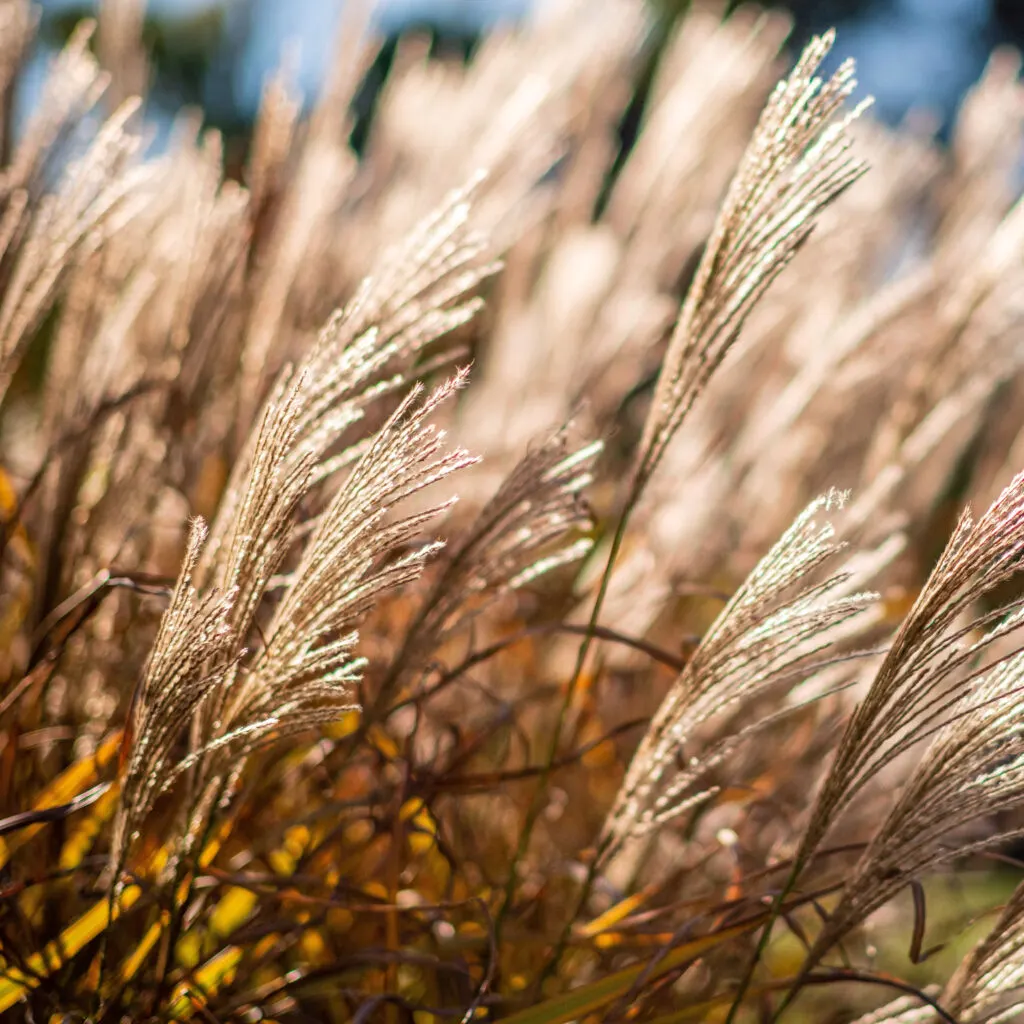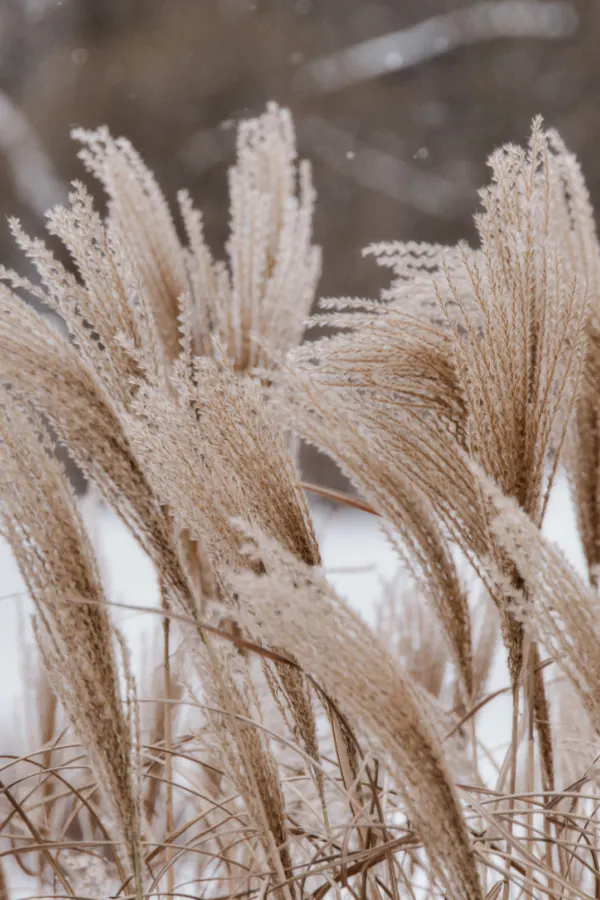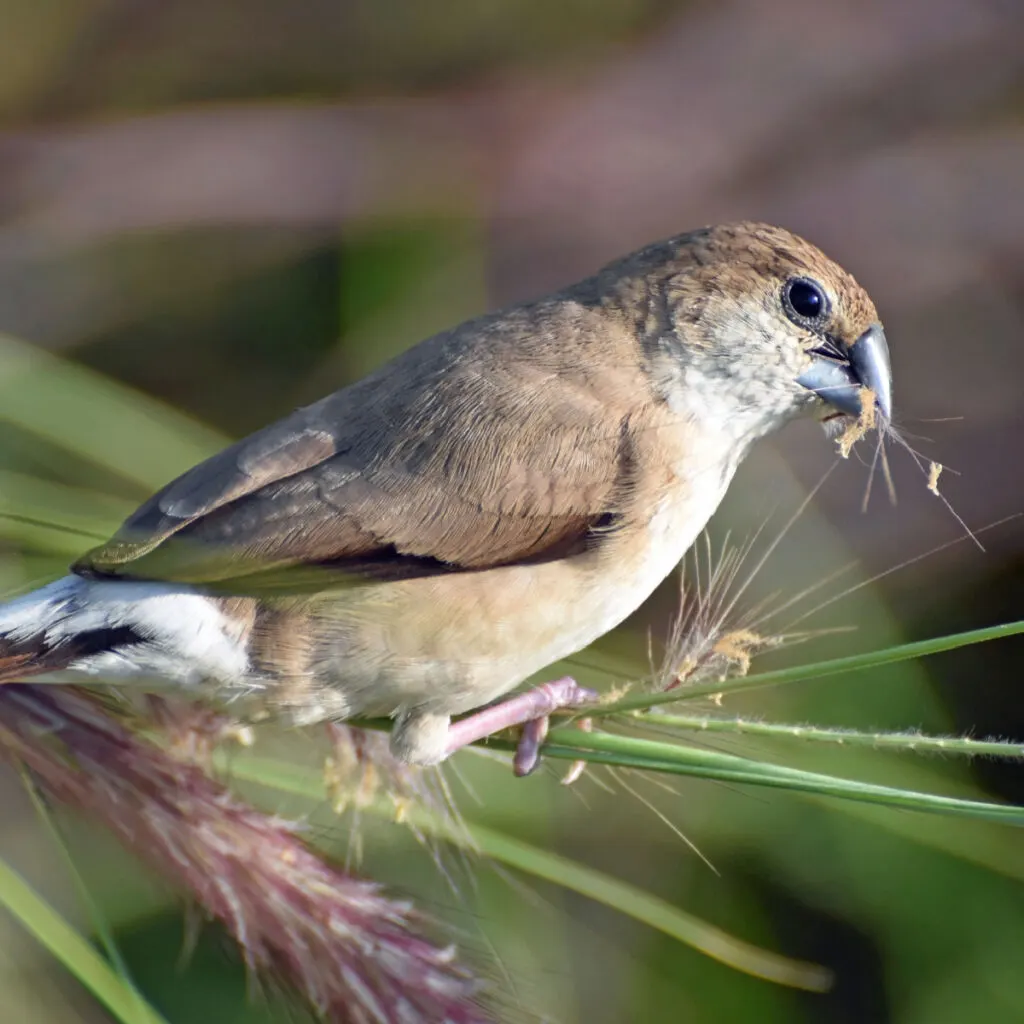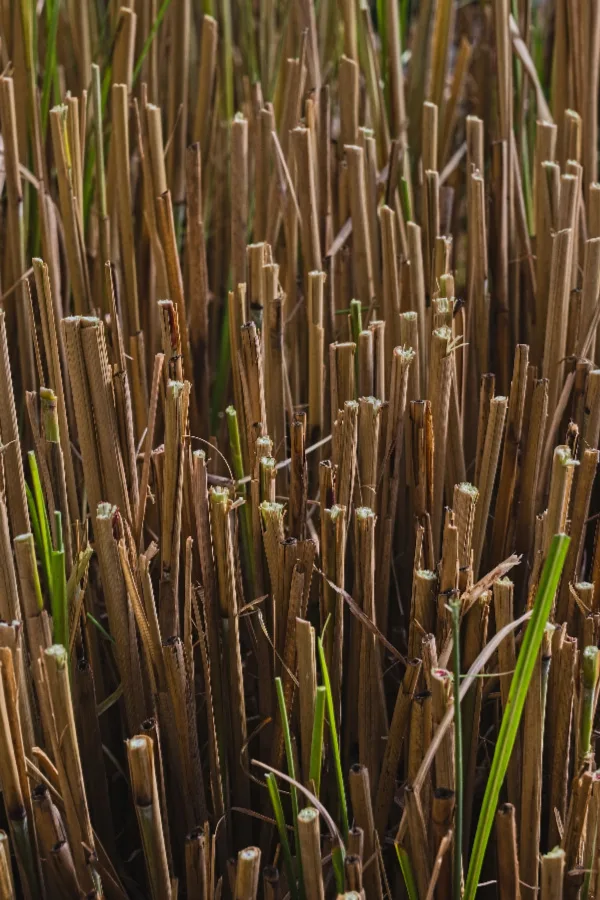Wondering what to do with your ornamental grasses this fall before the cold, snow and blustery weather of winter arrives – and whether or not you should cut them back?
Ornamental grasses are a popular mainstay in home landscapes over a wide range of regions and climates. With varieties that can handle anything from scorching hot summer to frigid winters, the drought-tolerant, low-maintenance plants are a perfect choice for adding big interest with little hassle.
Unlike many herbaceous perennials that die completely back to the ground in late fall, ornamental grasses continue to stand tall and strong. Even as they die off. In fact, in many cases, ornamental grasses actually become even more beautiful as they dry out – which is just another reason gardeners love the plants so much.

But if there is one thing that many gardeners struggle with, it’s what to do with their grasses late in the year. Or more precisely, should they or should they not cut them back before winter arrives? And last but not least, when can they divide any that have grown too large for their space?
As you will see below, for the question of cutting back, it really comes down to a matter of personal preference. But for fall dividing, there is not quite the same amount of wiggle room for the well being of your grasses.
What To Do With Ornamental Grasses Before Winter
So let’s get right to the question, should you leave ornamental grasses up through the winter or not? As it turns out, there are actually good reasons for both leaving them up – or cutting them completely back. And a lot of it has to do with your specific location and the set up of your landscape.
But before we cover the pros and cons of cutting back or not, it’s important to note that if you do choose to cut your grasses back in the fall it will not harm them in the least. Unfortunately, there is a lot of misinformation about the dangers of cutting back grasses in the fall. But rest assured, you are not going to kill your grasses by cutting them back.

One thing is for sure, the roots of ornamental grasses are extremely hardy. So much so that there is little worry of them freezing out over winter. Even with their top canopy of foliage removed all through the winter.
The Pros – Why To Leave Ornamental Grasses Standing In The Winter
In late fall, the thick green blades of ornamental grass turn a gorgeous shade of golden brown. And if that wasn’t enough beauty, their seed plumes shoot up high above, adding even more color and interest to the autumn landscape.
This, of course, comes at a time when most other plants are completely dying off. Annuals that once had brilliant blooms are completely gone. As are the perennials that once filled beds with greenery and blooms as well. Even most of the trees and bushes have lost their leaves and color.
The truth is, by late November and early December, there is rarely much color or interest anywhere in the landscape. In fact, most flowerbeds are completely void of any life. That is, unless you leave your ornamental grasses standing!

But beyond sheer beauty, allowing your grasses to remain through winter is also extremely helpful to wildlife as well. The seed heads of ornamental grasses provide a good source of food for birds and small animals. And they also provide them with much needed cover!
Not only can ornamental grass provide warmth and protection from cold and snowy weather, it also serves as a great place for birds to hide from predators. In the barren landscape, birds stick out easily. And when they do, they become easy prey for eagles and hawks.
The Cons – Why Not To Leave Ornamental Grasses Standing In The Winter
So with all of those advantages, why would you ever want to cut your grasses back in the fall? For many, there actually several good reasons – beginning with the mess they can create!
All of those seed heads, plumes and decaying blades can make beds quite untidy. Especially in smaller yards or confined spaces where they collect in large quantities.
Anyone who has left their grasses up over the winter knows how much clean up can be involved in early spring when they are left up. It can be especially rough if you happen to have grasses that border a close neighbor who might not like all of the mess.

By cutting grasses down in the fall, you can certainly avoid all of the mess. When grasses first die back, their seed heads and plumes are much stronger and tightly formed. Because of this, they can be cut and disposed of with far greater efficiency.
But there is one more reason many gardeners choose to cut back their grasses in the fall and not wait until spring – and that reason is the threat of rodents!
Unfortunately, all of that thick grass is also the perfect cover for mice, voles, chipmunks and squirrels. And if these are problematic in your landscape, providing cover for them is not in your best interest!
Again, the choice to cut or not cut will not harm the plants, so it really does come down to personal preference. However, when it comes to dividing any overgrown plants – that is one chore that should always wait until spring!
Why Not To Cut Back Ornamental Grasses In The Fall
Although ornamental grasses are hardy, dividing them in the fall can put them at risk of dying out over the winter. Especially if you happen to live in a climate where winters can get below freezing. The constant thawing and freezing of the soil can be quite hard on newly cut root sections.

It is best to always dig up and cut ornamental grasses in very early spring. This allows the roots of grasses to go fully dormant in the winter. By early spring, you can safely dig them out, divide, and then transplant. Before you know it – your new divisions will be sprouting up with fresh new greenery for the season. See: How To Cut Back & Divide Ornamental Grasses In Early Spring
Here is to getting your ornamental grasses ready for winter – for whatever best fits your landscape!
Follow Our Facebook Page For Even More Great Tips! Simple Garden Life Facebook Page
Simple Garden Life is a website dedicated to keeping gardening fun, simple and enjoyable! We publish two new articles each week along with a new garden podcast episode every two weeks. This article may contain affiliate links.
